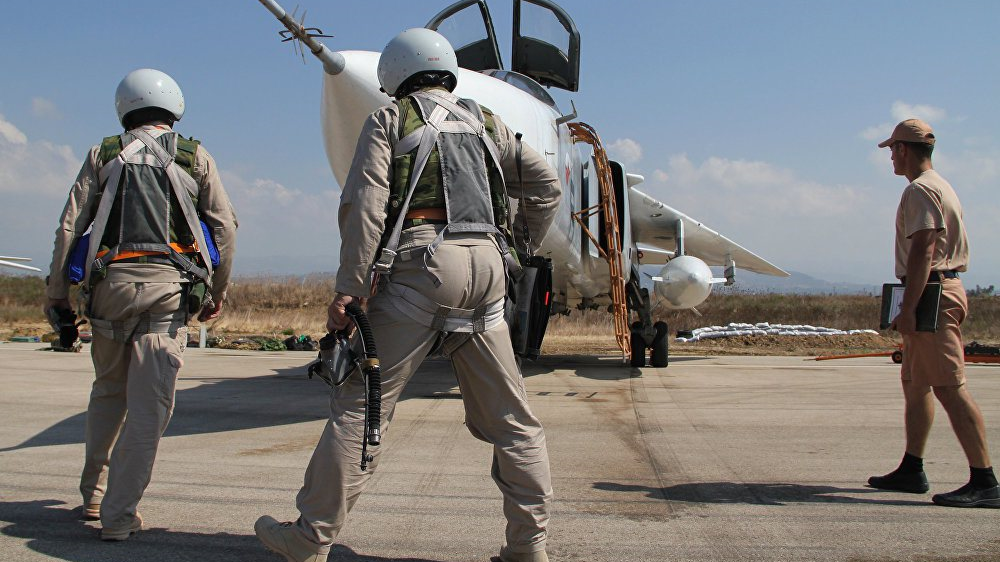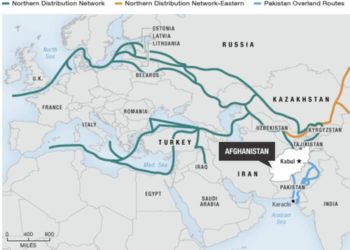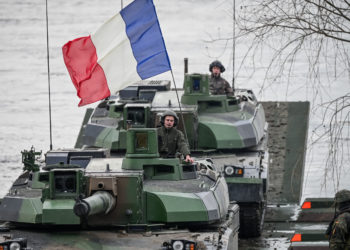The Hmeimim airbase has been the subject of a lot of attention in the past weeks with the Russian government signing a lease agreement approved by Damascus. What does it all mean? How important is Hmeimim and what are the consequences of this signature / contract ?
Let’s find out.
First, the basics: Timeline, deployment, equipment and operations
The Hmeimim Air Base is a Russian base located near the city of Latakia, in the Latakia Governorate, Syria. It is right next to the Syrian Bassel Al-Assad International Airport.
In late August /early September 2015, news filtered that Russian engineers were working on the Hmeimim air base, lengthening and resurfacing the landing strip and building infrastructures. The Turkish authorities notified of increased traffic from Russian Black Sea cargo and transport ships back and forth between Sevastopol and the naval technical support base of Tartus in Syria, situated only 50km from the Hmeimim air base.
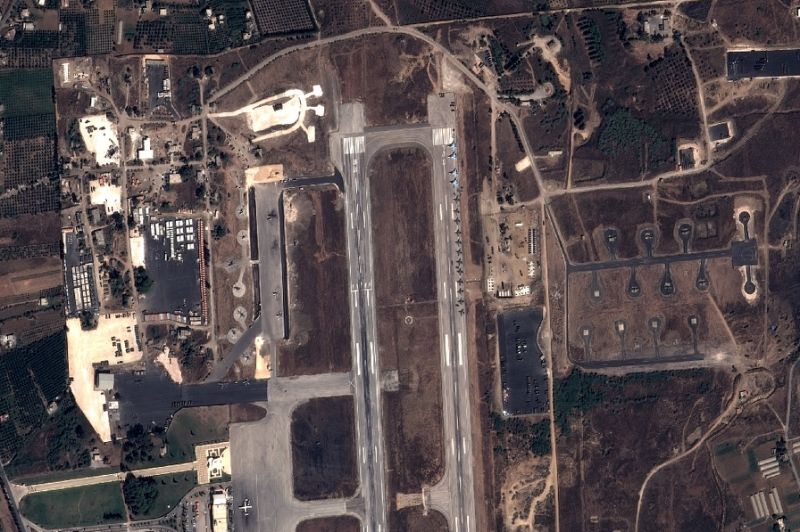
By the 30th of September 2015, the Russian authorities announced the base was operational and housed a Russian expeditionary force of about 1000 military personnel and 30 aircrafts which aim was to support the Syrian government in its fight against various rebel groups and ISIS. Operations started almost instantly with air strikes being launched within the hour.

Infrastructure wise, the Russian built a hospital, air conditioning barracks for up to 2000 troops, catering and leisure facilities including a small shop, a library and several gym/sports venues /pitches. An air traffic control tower, refuelling and communication facilities were also built / upgraded. The Hmeimim air base can accommodate around 50 planes but the amount peaked in the first half of 2016 at around 44 aircrafts.
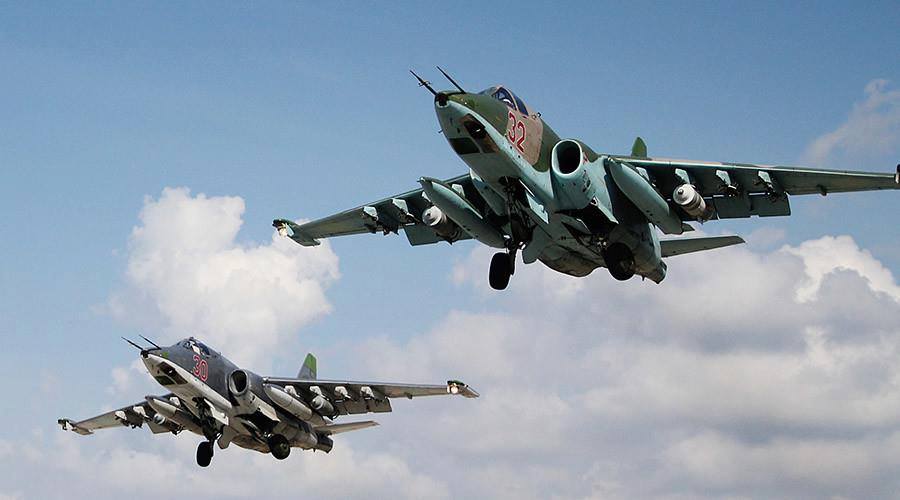
The base has seen a wide variety of planes deployed and operated since September 2015:
For airstrikes
Su-24M2 Fencer, Su-34 Fullback and Su-25SM and Su-25SM3 Frogfoot
For air patrols, escorting duties and air superiority
Su-30SM Flanker C and Su-35S
Antonov An-124 and Ilyushin Il-76 transport / cargo aircrafts have been spotted rotating from Russia and delivering men and hardware, which proves the 2.8 km landing strip was built with heavy freighter use in mind.
Mi-24P Hind, Mi-28N, Mi-35 and Ka-52 have also been deployed for strikes, CAS mission in support to Syrian troops and air patrols / escort duty. Mi-8 were also sent to Syria for transport and SAR missions.
A Tupolev Tu-214R was deployed at least once in Syria from Hmeimim. This “spy” plane can be used for SIGINT, eavesdropping on radio communication, “listening” to the various electronic chatter emitted by hardware deployed by the rebels, which enables the Russian to identify what hardware is used and where it is deployed.
Over the first 168 days of their intervention, the Russian planes flew 9000 sorties. That’s an average of 53-54 sorties a day, sometimes peaking at over 70 sorties a day, proving that while the base is small and simply made it can handle a lot of traffic and the logistics that goes with it.
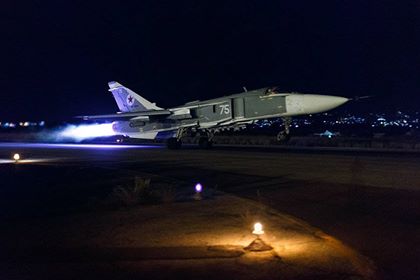
On the 24th of November 2015 the Turkish airforce downed a Russian Su-24 in an incident that strained relations between NATO and Russia. Since then, Hmeimim is also home to an S-400 Triumph battery.
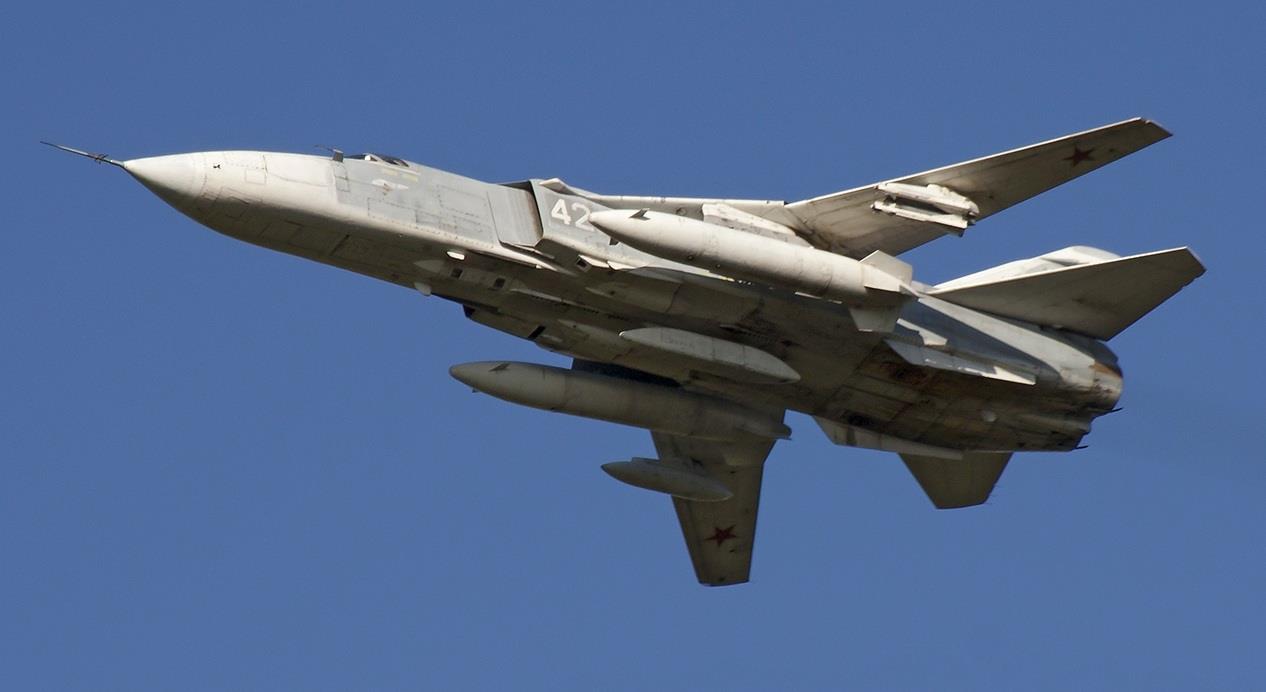
Supporting the S-400 battery are several Pantsir S1, Osa-AKM, S-125 Pechora-2M, Buk-M2E and S-200VE Vega systems.
This effectively gives the Hmeimim base a triple layer of air defence capable of detecting and engaging anything from the very long range / high altitude (Up to 400km!) to the very short range and low altitude. With each system operating in active or passive mode and working along different frequencies, it is doubtful any aircraft could get close to the base without being detected and tracked. American General Breedlove called this deployment “a De-Facto no fly zone and an A2/AD [anti-access/area denial] bubble created in the eastern Mediterranean”.
This AA complex enables the Russians to track most air traffic in Southern Turkey, Northern Jordan, most of Syria, most of Israel and all of Lebanon to which one must include a fair portion of the Syrian littoral.
A Krasukha-4 electronic warfare system has also been installed in Hmeimim. This system is meant to jam incoming missiles, mobile radars including AWACS at a range of up to 250km and drones.
On the ground, the base is protected by military personnel supported by T-90A / T90S main battle tanks, BTR-82A APC and various mortar and artillery systems.
Long term plans
The Russians have long term plans for their base. Those plans include moving away from the semi-permanent accommodations they are currently using to building a fully-fledged military town for their personnel.

So far, only one large parking area has been used for their jets. The future plans include several smaller holding areas to spread the jets and helicopters around the base. There are plans to build additional artificial hills to protect landing strip and parked jets as well as building a new control tower and install advanced communication hardware for increase capacity and capabilities.
Finally, a dedicated logistic hub for loading and unloading cargo planes away from the main landing strip should appear at some point.
The lease: Terms and ratification, the ramifications
The lease contract was signed by Damascus on the 26th of August 2015. It has only just been signed by the Russian State Duma.
Here is an English version of the agreement signed between Damascus and Moscow:
Article 1
Terms of the Agreement
Article 2
Subject of the Agreement
Upon the request of the Syrian side, the Russian Federation is deploying a Russian aviation group on the territory of the Syrian Arab Republic.
Place of deployment of the Russian aviation group and the list of facilities transferred over to the Russian side are stipulated in a separate protocol to the present agreement.
For the deployment of the Russian aviation group, the Syrian side provides Hmeimim airbase in Latakia province, with its infrastructure, as well as the required territory agreed upon between the parties.
Hmeimim airbase and its infrastructure are provided for use by the Russian Federation without charge.
The engagement of the Russian aviation group shall be carried out upon the decision of the commander of the group and in accordance with the plans agreed upon between the parties.
Article 3
Authorized Agencies
Article 4
Composition of the Russian Aviation group
Composition (type and quantity of air equipment, ammunitions and military equipment as well as size of personnel) of the Russian aviation group shall be defined by the Russian side upon the agreement with the Syrian side.
The organizational chart and list of staff of the Russian aviation group shall be developed, approved and amended by the authorized agency of the Russian party, notifying the authorized agency of the Syrian party.
Article 5
Importing and exporting of property and travel of personnel
The Russian party shall have the right to move into the Syrian Arab Republic and move out from the Syrian Arab Republic any equipment, ammunition, shells and other materials required for the aviation group, without any fees or duties.
All movable property and objects of infrastructure temporarily deployed by the Russian party on Hmeimim airbase shall remain the property of the Russian Federation.
Personnel of the Russian aviation group shall be able to freely cross the border, upon presenting travel documents valid for exit from Russia, and shall not be subject for customs or border control.
Article 6
Immunity and privileges
The Russian servicemen shall respect the laws, customs and traditions of the country of sojourn, of which they will be informed upon their arrival in Syria.
The Russian military contingent shall be immune from Syria’s civilian and administrative jurisdiction.
Movables and immovables of the Russian aviation group shall be inviolable. Representatives of the Syrian Arab Republic shall not have the right to enter the place of deployment without prior agreement with the commander.
The servicemen and their families enjoy all the privileges under the 1961 Vienna Convention on Diplomatic Relations.
Any property belonging to the Russian aviation group has been declared immune and inviolable.
Syria has also pledged to exempt the Russian air group from any direct and indirect taxes.
Article 7
Settlement of claims
The Syrian Arab Republic shall not lodge claims to the Russian Federation, the Russian aviation group and its personnel, and shall not file any suits related to the activity of the Russian aviation group and its personnel.
The Syrian Arab Republic assumes responsibility for settling all claims that could be put forward by third parties as a result of damage caused by the activities of the Russian air group and its personnel.
Article 8
Tax benefits
The Syrian Arab republic exempts the Russian aviation group from any direct and indirect taxes.
Article 9
Amendments to the Agreement
Upon agreement between the parties the present agreement can be amended. The amendments shall be stipulated in separate protocols.
Article 10
Settlement of disagreements
All disagreements arising from using or interpreting of the present agreement shall be settled through consultations.
Article 11
Effective Date
The agreement is temporarily used from the date of its signing and enters into force as of the date of notification via diplomatic channels of fulfillment of the parties’ internal procedures.
Article 12
Term of the Agreement and its Termination
This agreement is for an indefinite period. It can be terminated by any of the signatories upon written notification. In this case, the agreement loses validity a year after the notification has been received by the other side.
The agreement was signed in Damascus on August 26, 2015, in Russian and Arabic, with both texts being equally authentic.
(signatures)
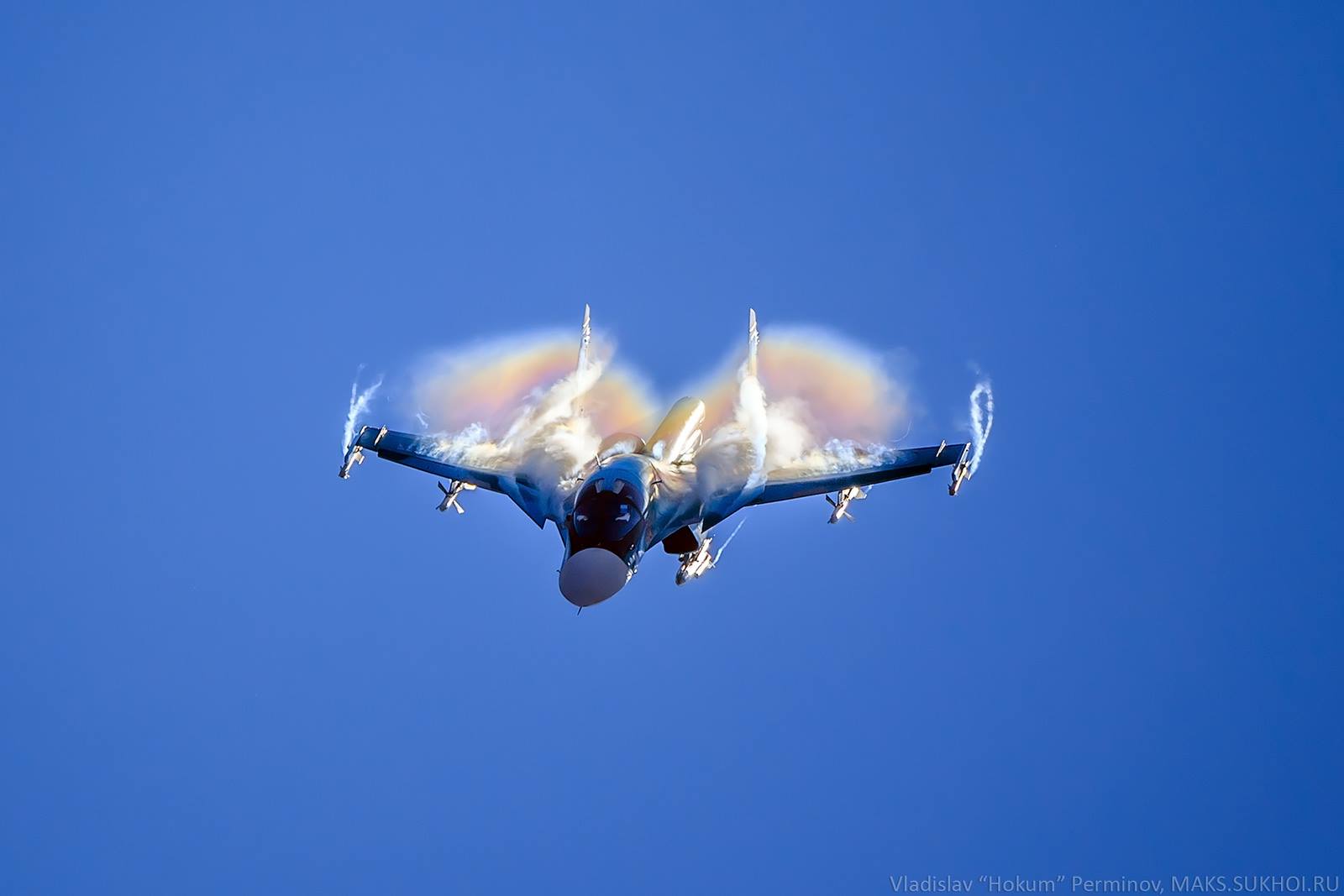
What it means:
In short, this is an open ended agreement, there is no time limit. Yes, both parties can terminate the contract with a year’s notice but no one imagine the Russian leaving or Damascus requesting the Russian to leave… That is clear, the Russians are in Syria to stay. The two countries have been allies for decades now, and Damascus, today, needs Moscow’s help, militarily, economically and diplomatically, more than ever.
The wording is also telling: The 1961 Vienna Convention on Diplomatic Relations is mentioned. It is said that Russian personnel will be guaranteed immunity, as it would be the case with a diplomatic mission.
The term “border” is used and it is said that Russian personnel can freely cross said border with Russian ID papers and can’t be subjected to border controls.
No weapons, ammunition, equipment and materials sent by Moscow to Hmeimim are subject to control, fee or tax.
Russia pays no fee or rent for its base. Moscow has a base in Syria free of charge.
In short, Hmeimim airbase has become a Russian Sovereign base and is legally considered Russian territory.
What next? Consequences
Russia is bunkerising its position in Syria, physically and diplomatically. Hmeimim has become a heavily defended Russian territory inside of Syria itself.
The recent deployment of an anti-ballistic S-300V system in Tartus and the announcement that Tartus would be soon turned from a small logistic naval base to a fully-fledged naval base reinforce the feeling the Russians are digging in for the long term.
The reasons are multiple. Russia intervened in Syria for many different reasons. One of them was that Syria has been a loyal ally for decade.
Also, Russia knows that around 5000 to 7000 of its citizens, mainly from the Caucasus, have joined the likes of ISIS and Al-Quaeda in Syria. The Russians prefer to fight them abroad now to prevent them from becoming battle hardened and come back home to bring the fight on home soil. An Islamic caliphate in Syria, is far too close to the Russian federation borders for Moscow to accept it.
At the time of its involvement in Syria, Moscow was a diplomatic pariah. The Dombass and Crimea episodes made the global community ignore and punish Russia. By intervening in Syria, the Russians placed themselves in the middle of the diplomatic agenda again. No one could ignore them and everyone had to talk to them to try and resolve the situation. By raising the stakes in Syria, Moscow also hopes to gain leverage in other negotiations in the long term such as the ongoing crisis in Ukraine, the build-up of NATO troops on its border or the economic sanctions aimed at the Russian economy and some Russian political leaders. There is no guarantee this strategy will work as so far, the Western chancelleries are confronting Moscow head-on, diplomatically, economically and militarily.
Another was that Moscow is against “regime change”. Russian diplomacy argues that hard regime change such as seen in Iraq and Libya only lead to a power vacuum and chaos. Iraq today, 13 years after the US led invasion of 2003 is not assured of its future as a country. Libya, once one of the most developed North African country is now an uncontrolled territory where different factions and tribes are slugging it out against one another.
The Russians point to the risk of seeing the same scenario in Syria. Syria is home to many ethnic and religious minorities, including a sizeable Orthodox community. Their future would be bleak under a non-secular government.
For over four years, Russia and the West have argued over what would be the best way to solve the Syrian crisis. The West wants Assad gone at all cost. Preferably sooner rather than later. Russia wants first Syria to be pacified and Al-Quaeda and ISIS defeated before organising elections to let the Syrian people decide for themselves.
Recently, the focus has been Aleppo. Aleppo is the last big rebel stronghold in Western Syria. Its fall back under government control would be seen as a defeat for the rebellion. Many rebel groups supported by the US, Turkey and the Gulf monarchies are fighting within Aleppo. Not only against Assad’s forces but also against one another. Those rebel forces are pretty volatile. In the past, many Free Syrian Army battalions trained and equipped by the US subsequently pledged allegiance to Al-Quaeda. While the West wants a full cease fire over Aleppo, the Russians first wants the moderate rebels to be separated from the extremist groups. The west refuses to supply such a list: It is simply impossible as nobody can vouch for the loyalty of those rebel groups, only the Kurds having proven themselves loyal and steadfast. .
Washington accuses the Russians to support Assad over any other considerations. Moscow accuses the Americans to want an “anything but Assad” solution, even if it means collaborating with extremist groups such as Al-Quaeda. The Russians point out that Al-Quaeda cannot be defeated globally if at the same time, it is helped, trained and equipped in Syria.
The main problem is that both sides have invested so much effort, money and diplomatic clouts into the situation that pride is now at stakes. Both Russia and the US have designated each other as “the bad guy” over Syria. The Media on both sides have frantically painted the other side as bad and dangerous. Logic has gone out of the window a long time ago in these negotiations and neither side wants to appear weak by compromising. For many reasons, internal and external, neither side is in a position to back down.
We are in a logic of confrontation. By signing the deal on Hmeimim last week, the Russian Duma takes steps to complicate the decision process of current and upcoming US political and military leaders and shortening their list of options or at least making several of those options highly risky. Hillary Clinton’s proposal for a blanket no fly zone over Syria is now impossible to implement as there is a Russian Sovereign territory within the country. The implementation of such a fly zone would now have to be local rather than national, limiting its effectiveness.
The Russian detection, jamming and defense systems in the Latakia province limit the field of action of the US Coalition aircrafts to the South and East of the country. The potential for a series of cruise missiles strike on Damascus’ political and/or military infrastructure is now seriously limited by the S-300V battery in Tartus. Any potential offensive mass action by the US led Coalition in Syria could directly result in a direct if accidental clash between the US and Russian forces in Syria. The potential for escalation and loss of control over the subsequent events is frightening.
The negotiations between West and East have so far failed and the loss of confidence toward one another has reached a low never seen since the mid- 80’s. The situation is dire. We are in the midst of a new Cold War and Syria has become its first proxy-war. Right now, nobody knows how it will end up. An grave incident or a war will only be avoided if leaders and diplomats on both sides stop name calling and accusing and start talking in good faith.
Communication will be key.
